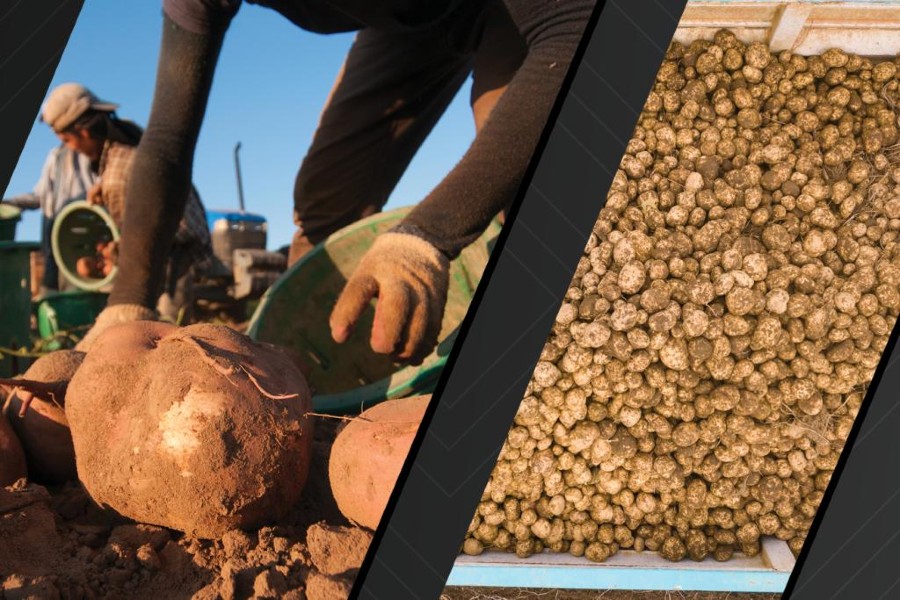Potatoes are the most widely grown and consumed vegetable in the United States. Potatoes’ popularity is a result of their versatility and affordability, as well as being a tasty and nutrient-dense food choice. In 2020, U.S. potato production was valued at about $3.65 billion.
While per acre yield has trended up over the last several years, challenges such as climate change, diseases and pests threatened both potato yields and quality, write Margaret Lawrence, Writer-Editor at the USDA’s National Institute of Food and Agriculture (NIFA), and Sara Delheimer from the Multistate Research Fund Impacts Program.
Supported by funding from NIFA, research at Land-grant Universities is helping to make sure we have plenty of potatoes, Lawrence and Delheimer point out in this article.
They highlight these research efforts from across the nation:
- More than 70% of varieties grown in the U.S. were created with U.S. Potato Genebank material. Colorado State, Cornell, Michigan State, Minnesota, North Carolina State, Oregon State, Texas A&M and Wisconsin universities work cooperatively to support the U.S. Potato Genebank. The genebank houses more than 5,800 unique plant samples covering 89 species. It is the only practical source of exotic potato germplasm for researchers and breeders in the U.S. Over 70% of potato varieties grown in the U.S and all potato varieties released in the past five years used genetic material from the genebank.
- Eastern Land-grant Universities including Cornell, Florida, Maine, North Carolina State, Ohio State, Penn State, Rutgers and Virginia Tech conduct potato variety trials and populate a database for eastern growers. This provides growers with the most up-to-date information, enabling them to make better variety choices and improve overall production.
- Oregon State, Washington State and Idaho partner in the Tri-State Potato Variety Development Program. This program provides growers with access to new potato varieties that require fewer inputs with improved yield and quality. These varieties are now planted on more than 160,900 acres in the three states with an estimated value to growers of $810 million.
- Who doesn’t love a potato chip? Two varieties bred by Cornell account for 15% of U.S. potato chip production.
- Scientists at Idaho, Michigan State, Washington State and Wisconsin developed potato virus detection training to help prevent serious yield losses to disease.
- Pests can be a real problem for potato growers, but Maine Extension’s Potato IPM Program is helping the state’s 300 commercial potato growers battle these issues. The economic impact from Extension’s pest monitoring and educational programs for the 2018 season is estimated at more than $8.1 million across 48,000 acres of potatoes.
- Oregon State has developed a new zebra chip disease detection method that is 30-60% more accurate. Zebra chip is a destructive disease of potatoes in North America and other parts of the world.
- Idaho scientists have bred potatoes resistant to tuber greening, which can be toxic to consumers. Potato tubers are specialized stems of a potato plant, and tubers that are exposed to light will naturally turn green. The green is chlorophyll, a compound found in all green plants. However, when potato tubers turn green there is usually an increase in a glycoalkaloid compound called solanine. Tubers with a high concentration of solanine will taste bitter and can be harmful if eaten in large quantities.
Source: National Institute of Food and Agriculture (NIFA). Original article here
Source: https://www.potatonewstoday.com/
